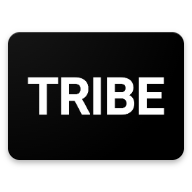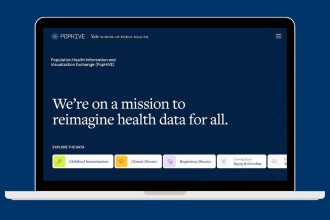Canada is one of the most desirable destinations for people seeking to build a better life. With its high quality of life, diverse culture, and countless opportunities, it’s no surprise that millions dream of immigrating to this beautiful country. However, the path to moving to Canada can seem complicated, with various visa options, requirements, and paperwork to navigate. While many sources provide the basics, there are some lesser-known immigration hacks that can make your journey smoother, faster, and less costly.
In this blog post, we’ll uncover the best immigration hacks to help you move to Canada in 2025, and why you should consider these insider tips when planning your big move.
1. Leverage the Provincial Nominee Program (PNP)
While many people focus solely on the Express Entry system, the Provincial Nominee Program (PNP) is one of the most underutilized immigration pathways to Canada. Each Canadian province and territory has its own PNP, which allows them to nominate candidates for permanent residence based on specific labor needs and skill shortages in their region.
Hack:
- Find a Province with High Demand for Your Skills: Research which provinces are actively seeking professionals in your field. For example, Alberta is often looking for tech workers and healthcare professionals, while Nova Scotia may need tradespeople.
- Apply Directly to a Province: Some provinces have less stringent eligibility requirements compared to the federal Express Entry system. If you receive a provincial nomination, it can significantly boost your chances of getting an invitation to apply (ITA) for permanent residency.
2. Increase Your CRS Score with a Job Offer
In the Express Entry system, candidates are ranked using the Comprehensive Ranking System (CRS). The higher your score, the more likely you are to be invited to apply for permanent residence. One way to boost your score is by obtaining a valid job offer from a Canadian employer, which can add up to 50 additional points to your CRS score (or even 200 points if you work in a high-demand occupation).
Hack:
- Network in Canada: Don’t just apply to job postings; network with people already working in Canada. Leverage platforms like LinkedIn to reach out to hiring managers and recruiters. Join Canadian professional groups and attend industry conferences, either in person or virtually.
- Work with a Canadian Recruitment Agency: Many Canadian recruitment agencies specialize in matching international talent with Canadian employers. If you can secure a job offer through one of these agencies, you’ll increase your chances of getting that important CRS boost.
3. Consider the Atlantic Immigration Program (AIP)
The Atlantic Immigration Program (AIP) is designed for skilled workers and international graduates who want to live in one of Canada’s four Atlantic provinces: Nova Scotia, New Brunswick, Prince Edward Island, or Newfoundland and Labrador. The program has fewer eligibility requirements and a more straightforward application process compared to other federal immigration pathways.
Hack:
- Study in the Atlantic Region: If you’re a student looking to settle in Canada, studying in one of the Atlantic provinces can give you a distinct advantage. The AIP allows international graduates to transition directly into permanent residency, and the Atlantic provinces are known for being more welcoming and having lower competition for jobs.
- Employer Support: In order to apply through the AIP, you need to secure a job offer from a designated employer. Many companies in the region are actively seeking foreign workers, so look for employers who have the authority to hire through this program.
4. Use a Canadian Study Permit to Stay Longer
Many people are unaware that obtaining a study permit is one of the easiest ways to enter Canada. Not only does it give you the chance to study at one of the country’s world-class universities, but it also provides a pathway to permanent residency.
Hack:
- Work While You Study: With a study permit, you can work part-time (up to 20 hours per week) during the school year and full-time during breaks. This gives you the opportunity to gain Canadian work experience, which is highly valued by employers and can help you later when applying for permanent residency.
- Apply for a Post-Graduation Work Permit (PGWP): After completing your studies, you can apply for a PGWP, which allows you to work in Canada for up to three years. This experience can make you eligible for permanent residency through the Canadian Experience Class (CEC) under Express Entry.
5. Consider the Start-Up Visa for Entrepreneurs
Canada’s Start-Up Visa program is an excellent opportunity for entrepreneurs who want to establish a business in Canada. This program is specifically designed for individuals who have the skills and potential to build innovative businesses in Canada that can create jobs and contribute to the country’s economy.
Hack:
- Seek a Designated Organization’s Support: To qualify for the Start-Up Visa, you’ll need the backing of a designated Canadian venture capital fund, angel investor group, or business incubator. Securing support from one of these organizations can be a lengthy process, but once you’ve done it, you can apply for permanent residency while you build your business in Canada.
- Work on Your Business Idea Early: If you’re not yet ready to start a business but have a strong entrepreneurial idea, consider attending networking events, startup accelerators, and pitching competitions in Canada. These experiences can increase your chances of obtaining the necessary backing for your application.
6. Get Help from Provincial Job Bank Programs
Many provinces have job banks that connect immigrants with local employers seeking specific skills. These job banks can be particularly useful for skilled workers who may not meet the requirements for the federal Express Entry system but still have in-demand skills that would be valuable in certain provinces.
Hack:
- Check Provincial Job Bank Listings: Regularly monitor the job banks in the provinces you’re interested in. Some provinces even provide additional points for candidates who secure a job through their job bank, which can boost your immigration chances.
- Look for Employers Offering LMIA: The Labour Market Impact Assessment (LMIA) is a process where employers in Canada prove that no Canadian citizen or permanent resident can fill the job. If you can secure a job with an LMIA, you’re in a strong position to apply for permanent residency.
7. Apply Through the Express Entry System While You’re Abroad
Many people mistakenly assume that they need to be in Canada to apply for permanent residency, but this isn’t true. You can apply through the Express Entry system while still living in your home country, and it’s entirely possible to receive an invitation to apply (ITA) without ever stepping foot in Canada before.
Hack:
- Optimize Your Profile Before You Apply: Take time to optimize your Express Entry profile by getting your credentials assessed, improving your language proficiency (through IELTS or French exams), and accumulating relevant work experience. You can improve your CRS score even if you’re still living abroad.
- Use Job Search Websites: Use Canadian job search websites, like Job Bank or Indeed, to look for positions in Canada while you’re still overseas. Securing a job offer can increase your CRS score and make it easier to get an ITA.
8. Explore Family Sponsorship Options
If you have family members who are Canadian citizens or permanent residents, they may be able to sponsor your immigration through the Family Sponsorship Program. This is a faster and more straightforward process compared to other immigration streams, especially for spouses, dependent children, or parents and grandparents.
Hack:
- Ensure You Meet the Requirements: For the sponsorship to be successful, both the sponsor and the applicant must meet certain eligibility requirements. Make sure you have all the documentation in order before submitting your application.
- Use Sponsorship for Express Entry: If you’re sponsored by a Canadian relative, you may be able to gain additional points for your CRS score in the Express Entry system.
9. Use the Post-Graduation Work Permit (PGWP) for a Smoother Transition
As mentioned earlier, completing studies in Canada provides a great opportunity to stay and work. The Post-Graduation Work Permit (PGWP) allows graduates from Canadian institutions to gain work experience after completing their studies.
Hack:
- Work and Gain Canadian Experience: After completing your studies, the work experience gained through the PGWP can count toward your Canadian Experience Class (CEC) eligibility under Express Entry, making it easier to transition from temporary status to permanent residency.
10. Get Legal and Professional Help
Navigating the immigration process can be complicated, but working with an immigration lawyer or consultant can save you time, money, and frustration. They can provide valuable insights, assist with paperwork, and ensure your application meets all the requirements.
Hack:
- Choose Accredited Professionals: Make sure you work with an accredited immigration consultant (Regulated Canadian Immigration Consultant or RCIC) or lawyer who specializes in Canadian immigration. They will help you avoid costly mistakes and guide you through the process with expert knowledge.
Conclusion
Immigrating to Canada can be a rewarding journey, but it requires strategy, patience, and knowledge of the best pathways available. By using these immigration hacks, you can increase your chances of a successful application and make your move to Canada faster and smoother. Whether you choose to apply through the Provincial Nominee Program, leverage the Atlantic Immigration Program, or secure a job offer, Canada offers countless opportunities for those who are ready to take the leap. Start your immigration journey today and take advantage of these insider tips to make your Canadian dream a reality!




Happy for the information
Migrating to Canada is one of many people’s desire but getting the visa is a big challenge